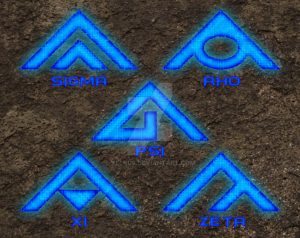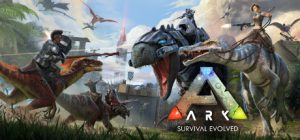After reading this, I realize how stream-of-consciousy this post is, and how I more looked at the larger question of technology, rather than tools. I also pre-emptively got grumpy about Arc, only to find love for Arc in above comments. Otherwise, enjoy!
I have to admit, the idea of “going rogue” sounds appealing to me—it’s inherently part of my pedagogy and the strategies I use in the classroom. At the same time, I’m also going through a period where I feel like trying to do complex things technologically is getting in the way of getting students to go rogue with me when it comes to content and activities. I find myself increasingly hesitant to use new technology or to even branch out in terms of learning management systems. Canvas is there, it (sometimes) works.
I find myself even getting grumpy when new tools pop up in Canvas—what was it this semester? Arc? I don’t know what Arc is yet, but all I know is that the symbol looks like Cauldron symbols from the game Horizon Zero Dawn (See Super Important Figure 1) and the name makes me think of riding dinosaurs with machine guns attached to them (a la Ark: Survival Evolved; See Super Important Figure 2)
Super Important Figure 1: Aliens are taking over Canvas…

Super Important Figure 2: …and they are bringing dinosaur machine guns
I also just noticed that the A in the Ark image also looks like the Cauldron symbols…conspiracy!
Now that I’ve made this connection, I am realizing how apt it is: the overarching idea of Horizon Zero Dawn is that humans, relying heavily on an increasingly incomprehensible technological sublime, managed to nearly wipe themselves out, leading to the game’s world, sparsely populated by less advanced tribal peoples and burgeoning theocracies. Will Canvas lead to the end times? Well, maybe. But I’m at least finding a new to recenter some of Warnock’s advice: “Don’t be more complicated technologically than you have to be” (19); “the technology should be relatively transparent and unobtrusive” (22). Though a lot of what Warnock says sounds a bit bonkers to me, I’m increasingly drawn to the simplicity of his type of online teaching (and, as far as I can tell, the norm of online teaching–where not many “tools” are actually used), even as I struggle, too, with his focus on normative textualities.
Exhibit A, “The Padagogy Wheel,” from one of the links under Northeastern’s “Build your Own Interactive Content” website (which needs to be enlarged twenty times to actually  be legible, if not comprehensible). In theory, this is a great idea—all of those tools are probably something at least one student would find learning value in. At the same time, nearly none of them are likely essential to a learning environment or things that should haphazardly be thrown in a class without many layers of reflection. The way they are presented is also overwhelming, a hodgepodge of everything from Twitter to DropBox to TED that is essentially a who’s who of every app in existence. Sure, pretty much everything can be a teaching tool, but are they necessary for critical engagement?
be legible, if not comprehensible). In theory, this is a great idea—all of those tools are probably something at least one student would find learning value in. At the same time, nearly none of them are likely essential to a learning environment or things that should haphazardly be thrown in a class without many layers of reflection. The way they are presented is also overwhelming, a hodgepodge of everything from Twitter to DropBox to TED that is essentially a who’s who of every app in existence. Sure, pretty much everything can be a teaching tool, but are they necessary for critical engagement?
Canvas is starting to feel somewhat overwhelming to me, let alone my students (and I hope I’m not the only one who was freaked out about Google Drive being linkable directly to Canvas). Right now I like simplicity—that Canvas offers a shared spaced to give students access to materials and instructions. It’s in the materials and instructions that I hope to go rogue, that the experiences are meaningful less so than the number of different ways those experiences can be produced for students.
(I do have to say, though I haven’t heard of Notebowl before now, beyond looking a little too much like Canvas with a Facebook Newsfeed, I like what I see so far in terms of more easily facilitating conversations between students and instructors without the need for the “formality,” over-thought, and repetitiveness of email.)
I guess, then, simplicity and ease of communication are my goals right now (and seem to be Warnock’s, too). For online teaching, this will probably also expand to include tools, which I can embed on Canvas, to simulate some of the more important aspects of teaching; for instance, annotation tools (like Hypothesis) and sharing/collaboration tools (like Google docs). I do see Canvas as a valuable space, as long as it can be used to curate productive exploration of course materials (through embedding videos and collaborative spaces and linking between pages) or creating a course narrative (I think back to the course-as-graphic-novel idea that came up last week). But when it comes to “tools,” I fear about overwhelming myself and students.
